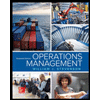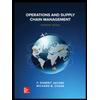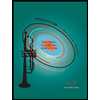The Ace Manufacturing Company has orders for three similar products. Product A B C с 1 2 Machine 3 A A B Three machines are available for the manufacturing operations. All three machines can produce all the products at the same production rate. However, due to varying defect percentages of each product on each machine, the unit costs of the products vary depending on the machine used. Machine capacities for the next week and the unit costs are shown below. B C с Product 1 2 Orders (units) 3 2,200 600 1,400 Capacity (units) 1,700 1,600 1,200 1 Machine 2 3 $1.00 $1.30 $1.10 $1.20 $1.40 $1.00 $0.90 $1.20 $1.20
The Ace Manufacturing Company has orders for three similar products. Product A B C с 1 2 Machine 3 A A B Three machines are available for the manufacturing operations. All three machines can produce all the products at the same production rate. However, due to varying defect percentages of each product on each machine, the unit costs of the products vary depending on the machine used. Machine capacities for the next week and the unit costs are shown below. B C с Product 1 2 Orders (units) 3 2,200 600 1,400 Capacity (units) 1,700 1,600 1,200 1 Machine 2 3 $1.00 $1.30 $1.10 $1.20 $1.40 $1.00 $0.90 $1.20 $1.20
Practical Management Science
6th Edition
ISBN:9781337406659
Author:WINSTON, Wayne L.
Publisher:WINSTON, Wayne L.
Chapter2: Introduction To Spreadsheet Modeling
Section: Chapter Questions
Problem 20P: Julie James is opening a lemonade stand. She believes the fixed cost per week of running the stand...
Related questions
Question
![### Transportation Model for Cost-Effective Production Scheduling
This section outlines the steps to develop a minimum cost production schedule for products using a transportation model, particularly focusing on machines and products.
#### (a) Linear Programming Formulation
To start, we define \( x_{A1} \) as the number of units of product A produced by machine 1, and in general, \( x_{ij} \) as the number of units of product \( i \) produced by machine \( j \).
**Objective Function:**
\[ \min \]
**Constraints:**
- **Machine Capacities:**
\[ \text{Machine 1 Capacity:} \]
\[ \text{Machine 2 Capacity:} \]
\[ \text{Machine 3 Capacity:} \]
- **Product Orders:**
\[ \text{Product A Orders:} \]
\[ \text{Product B Orders:} \]
\[ \text{Product C Orders:} \]
**Non-Negativity Constraint:**
\[ x_{ij} \geq 0 \text{ for all } i, j. \]
#### (b) Production Schedule
To represent the production schedule, we arrange the variables as follows:
\[ (x_{A1}, x_{A2}, x_{A3}, x_{B1}, x_{B2}, x_{B3}, x_{C1}, x_{C2}, x_{C3}) = \left( \boxed{} \right) \]
#### (c) Cost of Production Schedule
Finally, to determine the total cost (in dollars) of the production schedule, we calculate:
\[ \text{Total} = \$ \boxed{} \]
By following these steps, you can configure the machines to produce the required products while minimizing the overall production costs. The inclusion of specific machine capacities and product order requirements ensures that all constraints are adhered to, resulting in an optimal production schedule.](/v2/_next/image?url=https%3A%2F%2Fcontent.bartleby.com%2Fqna-images%2Fquestion%2Fc5f22055-3aa6-4963-993c-dc3ece59263d%2F719a81f8-ff0a-4ff1-b5f6-5f8ec09487aa%2Ftk3nsw5_processed.png&w=3840&q=75)
Transcribed Image Text:### Transportation Model for Cost-Effective Production Scheduling
This section outlines the steps to develop a minimum cost production schedule for products using a transportation model, particularly focusing on machines and products.
#### (a) Linear Programming Formulation
To start, we define \( x_{A1} \) as the number of units of product A produced by machine 1, and in general, \( x_{ij} \) as the number of units of product \( i \) produced by machine \( j \).
**Objective Function:**
\[ \min \]
**Constraints:**
- **Machine Capacities:**
\[ \text{Machine 1 Capacity:} \]
\[ \text{Machine 2 Capacity:} \]
\[ \text{Machine 3 Capacity:} \]
- **Product Orders:**
\[ \text{Product A Orders:} \]
\[ \text{Product B Orders:} \]
\[ \text{Product C Orders:} \]
**Non-Negativity Constraint:**
\[ x_{ij} \geq 0 \text{ for all } i, j. \]
#### (b) Production Schedule
To represent the production schedule, we arrange the variables as follows:
\[ (x_{A1}, x_{A2}, x_{A3}, x_{B1}, x_{B2}, x_{B3}, x_{C1}, x_{C2}, x_{C3}) = \left( \boxed{} \right) \]
#### (c) Cost of Production Schedule
Finally, to determine the total cost (in dollars) of the production schedule, we calculate:
\[ \text{Total} = \$ \boxed{} \]
By following these steps, you can configure the machines to produce the required products while minimizing the overall production costs. The inclusion of specific machine capacities and product order requirements ensures that all constraints are adhered to, resulting in an optimal production schedule.

Transcribed Image Text:### Production Planning at Ace Manufacturing Company
#### Product Orders
The Ace Manufacturing Company has received orders for three similar products. The orders are as follows:
| **Product** | **Orders (units)** |
|-------------|---------------------|
| A | 2,200 |
| B | 600 |
| C | 1,400 |
#### Manufacturing Machines
Three machines are available for the manufacturing operations. Each machine is capable of producing all three products at the same production rate. However, due to varying defect percentages of each product on each machine, the unit costs of production differ based on the machine used.
**Machine Capacities**
The capacities for each machine for the next week are listed below:
| **Machine** | **Capacity (units)** |
|-------------|-----------------------|
| 1 | 1,700 |
| 2 | 1,600 |
| 3 | 1,200 |
#### Unit Production Costs
The unit costs for producing each product using different machines are shown in the table below:
| **Product** | **Machine 1** | **Machine 2** | **Machine 3** |
|-------------|----------------|----------------|----------------|
| A | $1.00 | $1.30 | $1.10 |
| B | $1.20 | $1.40 | $1.00 |
| C | $0.90 | $1.20 | $1.20 |
This information can be used to optimize production scheduling and minimize costs while meeting the product orders and machine capacities.
Expert Solution
This question has been solved!
Explore an expertly crafted, step-by-step solution for a thorough understanding of key concepts.
This is a popular solution!
Trending now
This is a popular solution!
Step by step
Solved in 4 steps with 10 images

Recommended textbooks for you

Practical Management Science
Operations Management
ISBN:
9781337406659
Author:
WINSTON, Wayne L.
Publisher:
Cengage,

Operations Management
Operations Management
ISBN:
9781259667473
Author:
William J Stevenson
Publisher:
McGraw-Hill Education

Operations and Supply Chain Management (Mcgraw-hi…
Operations Management
ISBN:
9781259666100
Author:
F. Robert Jacobs, Richard B Chase
Publisher:
McGraw-Hill Education

Practical Management Science
Operations Management
ISBN:
9781337406659
Author:
WINSTON, Wayne L.
Publisher:
Cengage,

Operations Management
Operations Management
ISBN:
9781259667473
Author:
William J Stevenson
Publisher:
McGraw-Hill Education

Operations and Supply Chain Management (Mcgraw-hi…
Operations Management
ISBN:
9781259666100
Author:
F. Robert Jacobs, Richard B Chase
Publisher:
McGraw-Hill Education


Purchasing and Supply Chain Management
Operations Management
ISBN:
9781285869681
Author:
Robert M. Monczka, Robert B. Handfield, Larry C. Giunipero, James L. Patterson
Publisher:
Cengage Learning

Production and Operations Analysis, Seventh Editi…
Operations Management
ISBN:
9781478623069
Author:
Steven Nahmias, Tava Lennon Olsen
Publisher:
Waveland Press, Inc.